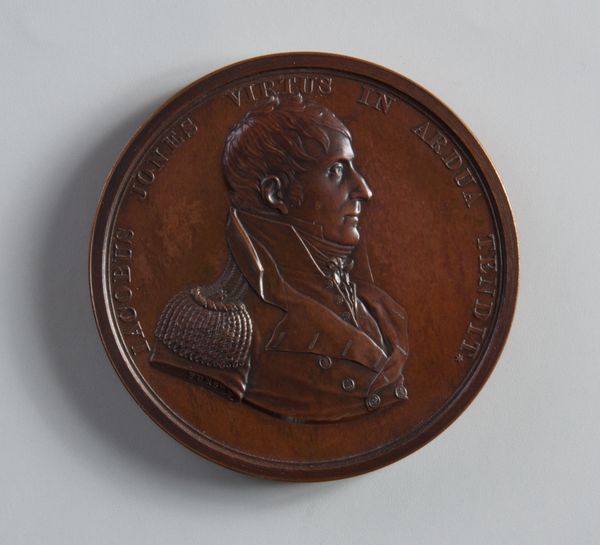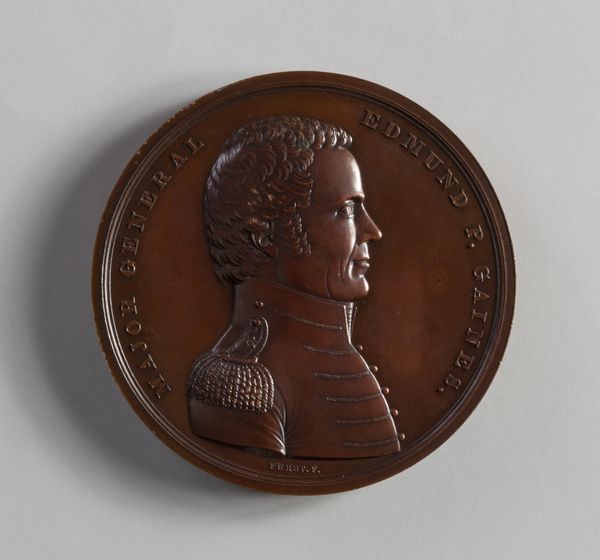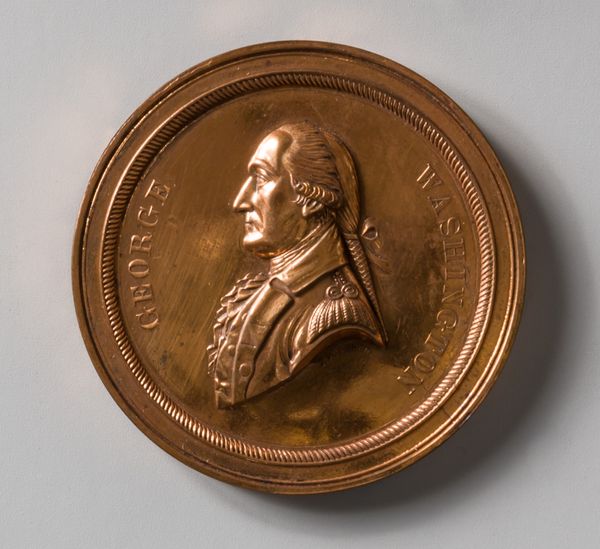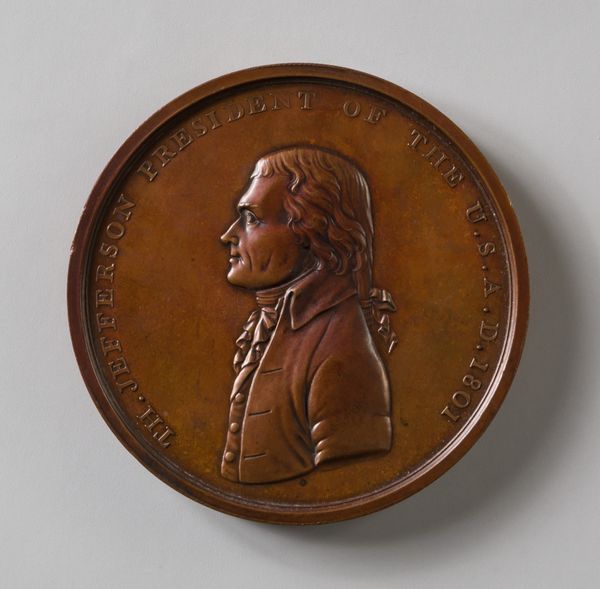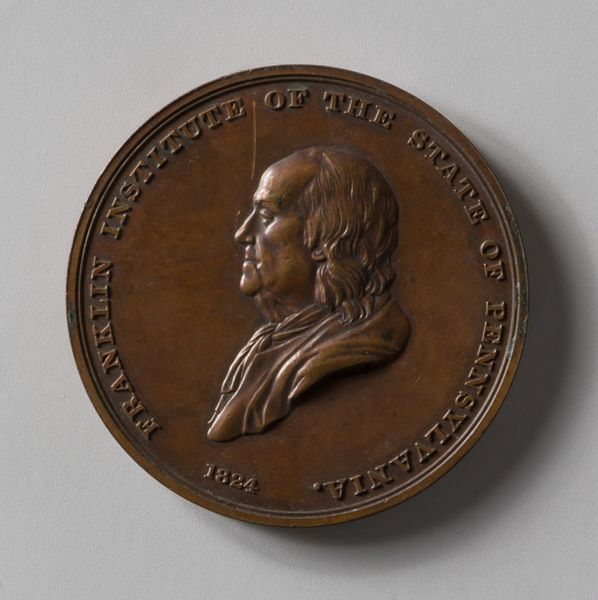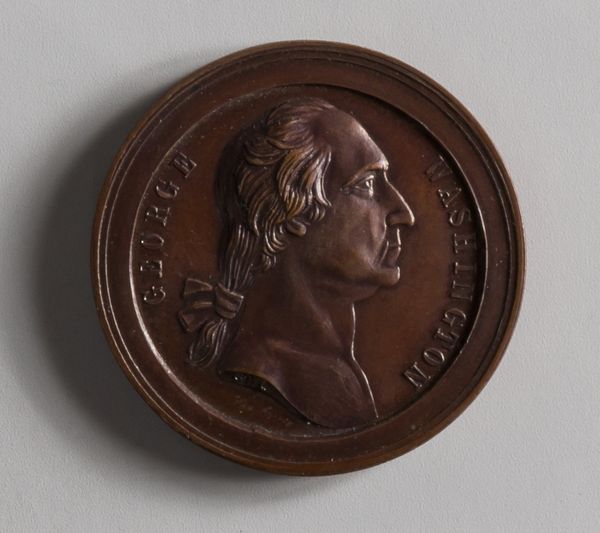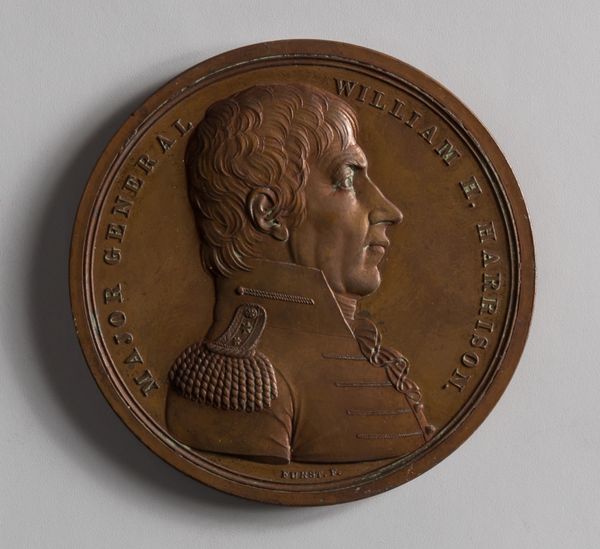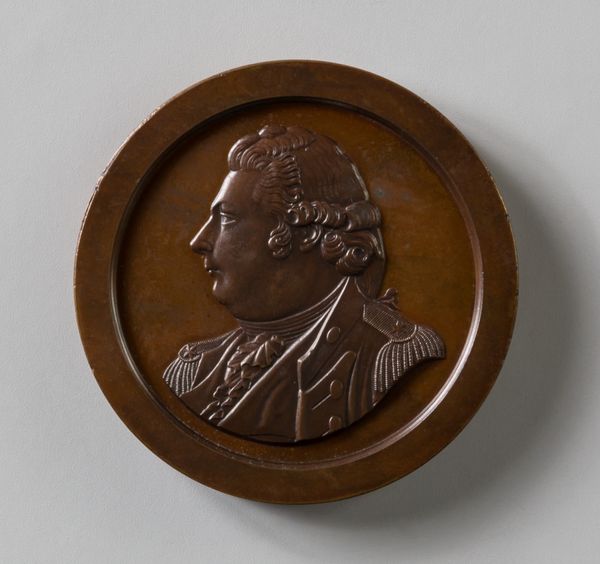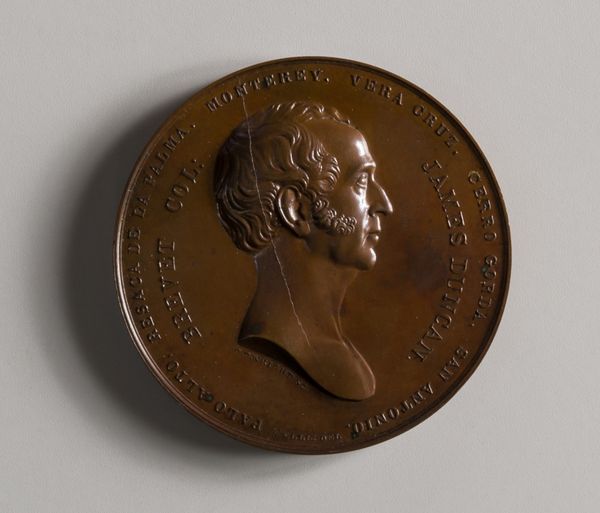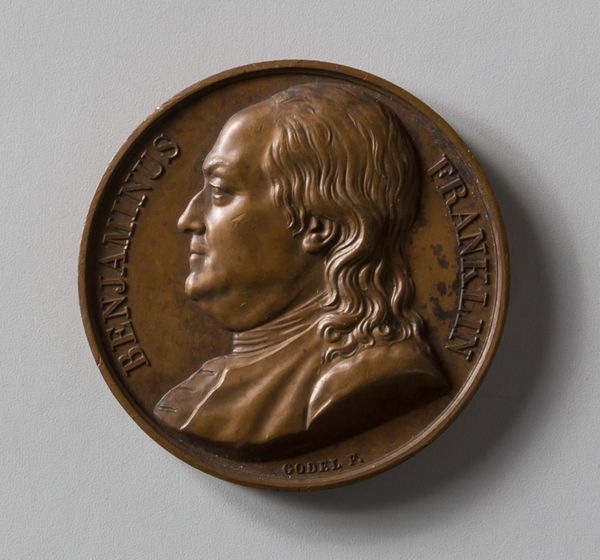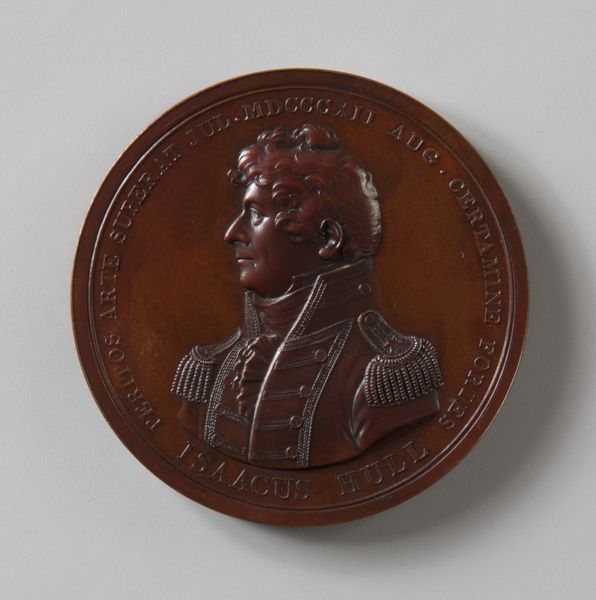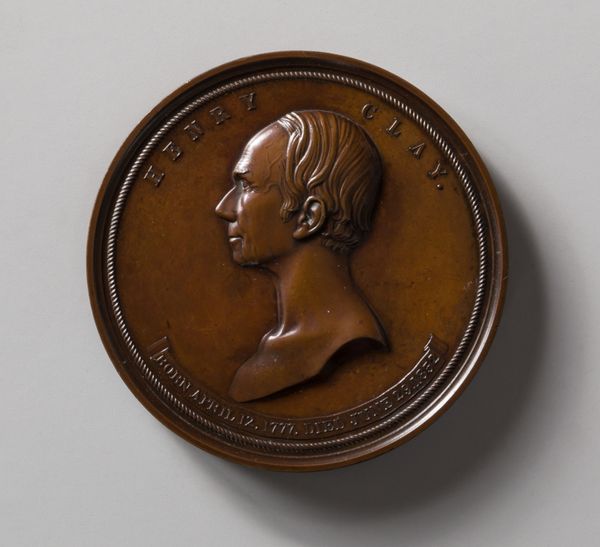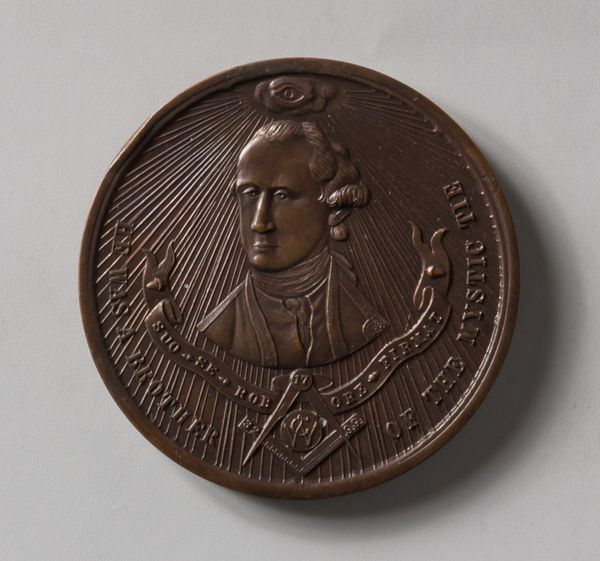
relief, bronze, sculpture
#
portrait
#
neoclacissism
#
sculpture
#
relief
#
bronze
#
sculpture
#
history-painting
Dimensions: Diam. 2 1/4 in. (5.7 cm)
Copyright: Public Domain
Editor: This is the "Medal of John Paul Jones and the Serapis," a bronze relief created in 1779 by Augustin Dupré. The crispness of the lines and the perfect circle are striking, but the real focal point is the meticulously rendered portrait. What do you make of it? Curator: Indeed, the formal elements are paramount. The artist employs the conventions of Neoclassicism – observe the clean lines, the emphasis on rationality and order, all contained within the circumscribed shape. The relief itself utilizes a very shallow depth, prioritizing line over volume to create the image. Notice the incised inscription around the perimeter? How does its linear form interact with the central figure? Editor: It seems to frame him, highlighting his importance while creating a sense of containment and controlled power. The inscription also appears to be carefully spaced, adding to the sense of order. Curator: Precisely. And what does the material, bronze, contribute to the work's overall impact? Consider its inherent qualities. Editor: Well, the bronze gives it a sense of permanence and authority. The reflective surface catches the light, creating subtle shifts in tone that accentuate the contours of Jones' face. Is it supposed to function almost as a mirror, a way for the viewer to reflect on heroism and leadership? Curator: That's a compelling interpretation. We might also note how the reflective qualities change depending on the angle of incidence and the observer's viewpoint in relation to the artwork itself. In sum, Dupré masterfully manipulated form and material to elevate Jones into a figure of enduring significance. Editor: I see that it is how the form gives meaning. That’s a new angle of looking at a portrait for me!
Comments
No comments
Be the first to comment and join the conversation on the ultimate creative platform.

